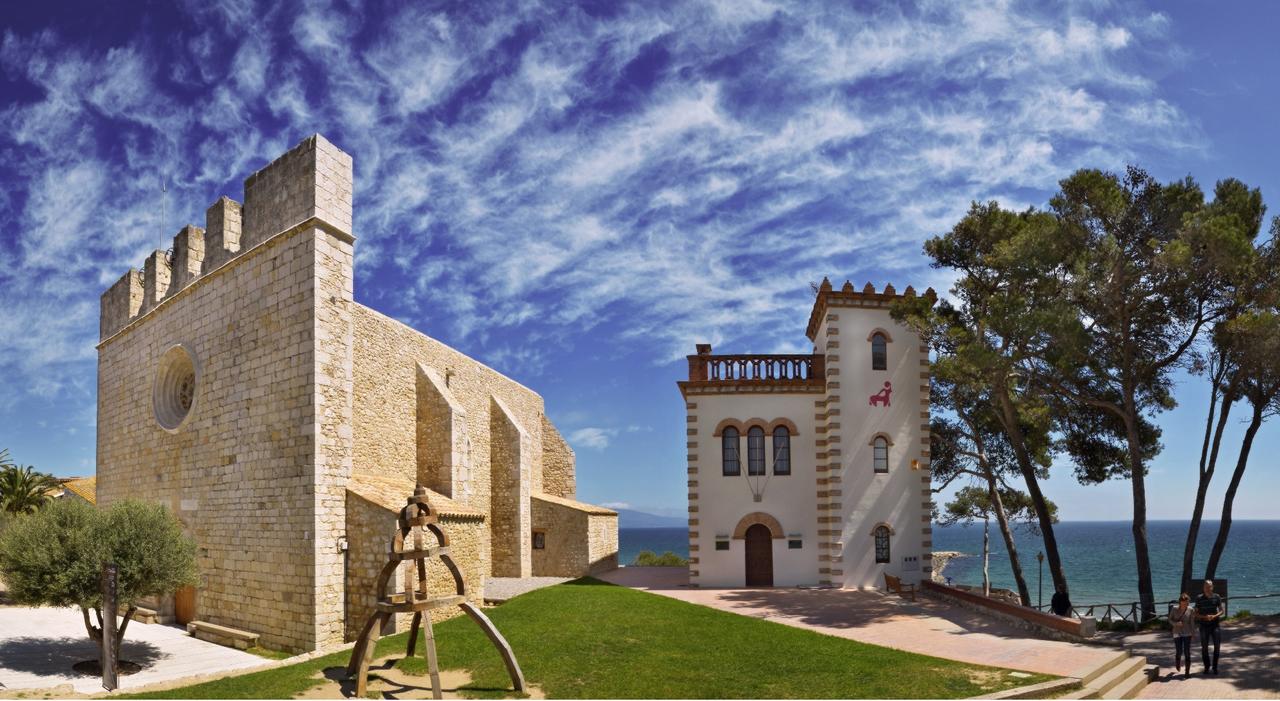We propose an itinerary from San Martí d’Empúries to Sant Pere de Roda to do by car for two days. With this itinerary of about 50 km you will know the origins of Catalonia, from the arrival of the Greeks of Phocaeans to Empúries, the reign and disappearance of the county of Empúries to the power of the church in the Middle Ages. You will be able to know how it was lived in the time through the remains that are still preserved. We suggest you spend the night in Roses at www.apivend.com to continue the next day with the second day.
Sant Martí d’Empúries
Sant Martí d’Empúries is located near the Ruins of Empúries. It is the place of arrival to the peninsula of the Phocaean Greeks. At the moment it is a population of medieval character. A s. IX, X and XI was the capital of the county of Empúries before it was transferred to Castelló d’Empúries.
Featured places:
– Remains of the medieval walls and the castle of the s. XIII
– Empúries archaeological site: ancient port of the Mediterranean and gateway to classical cultures in the Iberian Peninsula, the archaeological site of Empúries now includes the remains of the Greek city of Emporion, founded around 575 BC by the Phocaean Greeks, and the remains of the Roman city of Emporiae, built at the beginning of the 1st century BC, next to the Greek city.
Castelló d’Empúries
This condal town had its maximum splendor in the 11th century when the Counts of Empúries established their residence and turned it into the county’s capital.
Featured places:
– Gothic Basilica of Santa María: Built in the s. XIII-XV is one of the most important examples of Gothic religious architecture in Catalonia.
– Bell tower from the 13th century with gothic decoration
– Portal de la Gallarda: Entrance to the fortified area of Castelló on the east side. It is located on the irrigation ditch of the mill.
– The big house: Residential building of the Castellón nobility of the low middle ages. It is a sample of Catalan civil Gothic.
– Lonja or old house of the village: Old market of the medieval sea. It retains the structure of s. XIV.
– Palace of the Counts: Founded in 1317 by the Dominicans bordering the wall.
– Convent of San Agustín: The Augustinian friars moved to the center of the town in the s. XVII due to the war. Currently private building from the disentailment of the s. XIX
– Convent of Santa Clara: The convent of the Clarisas nuns of Castelló was founded outside the walls, and was moved to the interior of the city at the end of the 19th century. XVII. It consists of a church and an austere cloister.
– Old Bridge: Medieval bridge over the Muga built at the end of the s. XIII
– The laundry: Construction of the s. XIX with elements of the convent of Sant Francesc that was erected in this same place.
– Torre Carlina: Built at the end of the s. XIX at the entrance of Castelló to defend the city of the Carlists.
– Jewish Quarter: Castellón had an important Jewish community especially until the s. XII and that is glimpsed in the irregular plot of medieval streets.
– The Curia and the prison: The seat of the court of justice and the jail, essential estates in a medieval society, were built in 1336.
Vilabertran
Village located in the Empordà plain near the confluence between the Manol and Muga rivers.
Featured places:
– The canonical of Santa Maria de Vilabertran.
– Church of Santa Maria de Vilabertran: It is the most outstanding of the monastic group. A Gothic cross of the s. XIV
– Cloister: was built in the s. XII
– Campanario: It is formed by three galleries of Lombard style. Built in the s. XII and XIII.
Peralada
Around 500 BC, a tribe of Indiketes built the first walled town. Later, the s.IX was the center of the Carolingian empire. Currently it is a charming town.
Featured places:
– Cloister-museum of Sant Domènec: Vestige of the old convent of the Augustinians founded in the s. XI. It keeps capitals decorated with biblical and profane scenes.
– Church of Sant Martí: Original s. XVIII preserves Romanesque remains and the Gothic bell tower.
– Castle-museum of Peralada: s.XV. Located inside the old convent of Carmen. It includes a library with more than 80000 volumes, the wine museum and the glass museum.
– Convent of Carmen: Gothic building with an exceptional cloister and church.
Sant Pere de Roda
The monastery of Sant Pere de Roda was a Benedictine abbey of the old county of Empúries built on the northern slope of the mountain of Verdera.
Featured places:
– Sant Pere de Roda Monastery: The church stands out as a unique example within the Romanesque art, the cloisters and the two towers between the other dependencies of this Benedictine abbey.
– Castle of San Salvador de Verdera: walled enclosure documented to s.X with extensions in the s. XIII located at the top of the mountain of Verdera (670m above sea level). It belonged to the monastery of Sant Pere de Roda. In 1020 it was occupied by Count Ponç Hug de Empúries who returned it under threat of excommunication from Pope Benedict XIII. In 1789 it was demolished by the Duke of Noailles during the war of succession.
– Medieval town of Santa Creu de Roda: Very close to the monastery we can discover the remains of an abandoned center from the XVI century. Note the pre-Romanesque church of Santa Helena and the two fortified gates.





